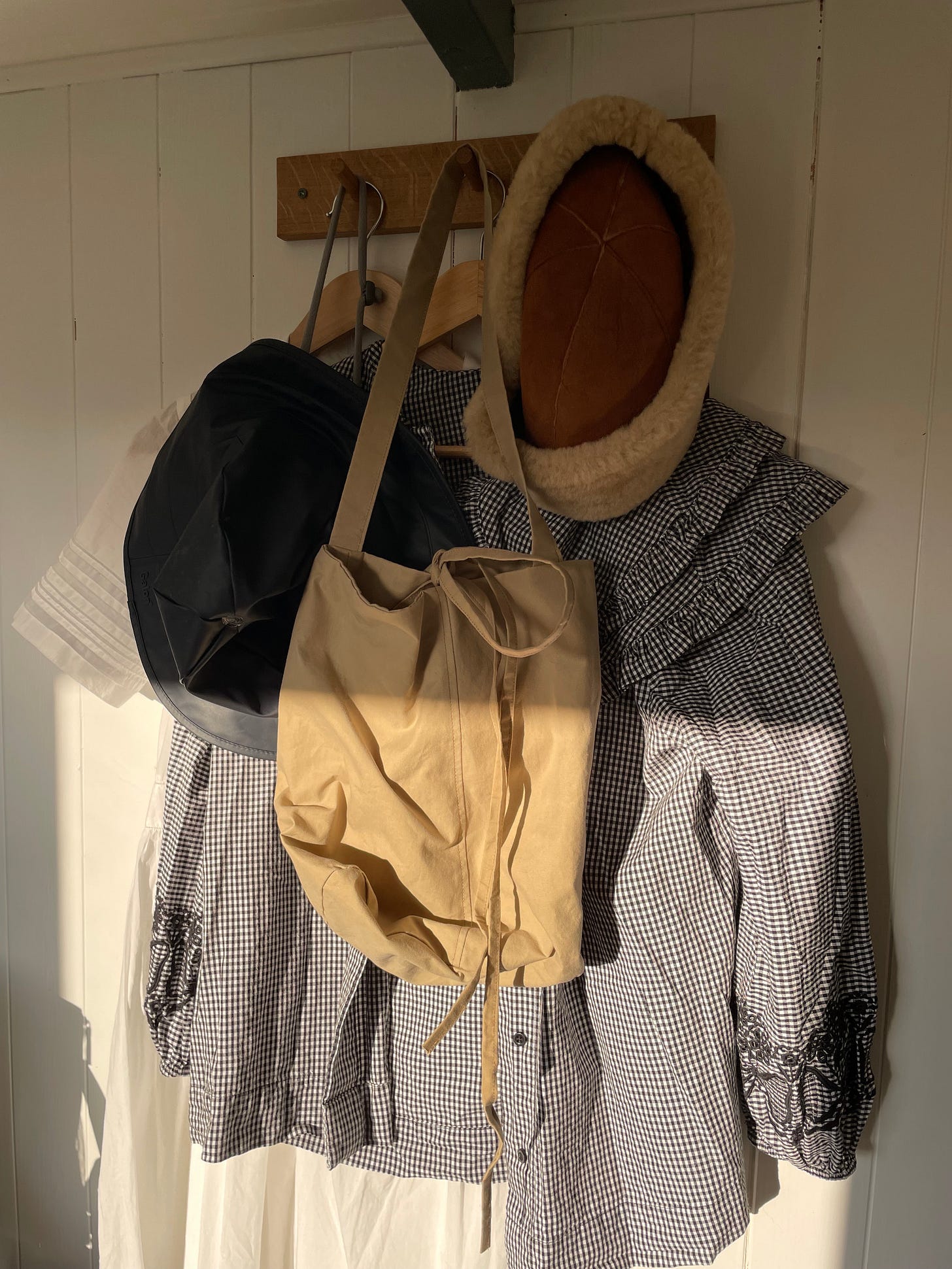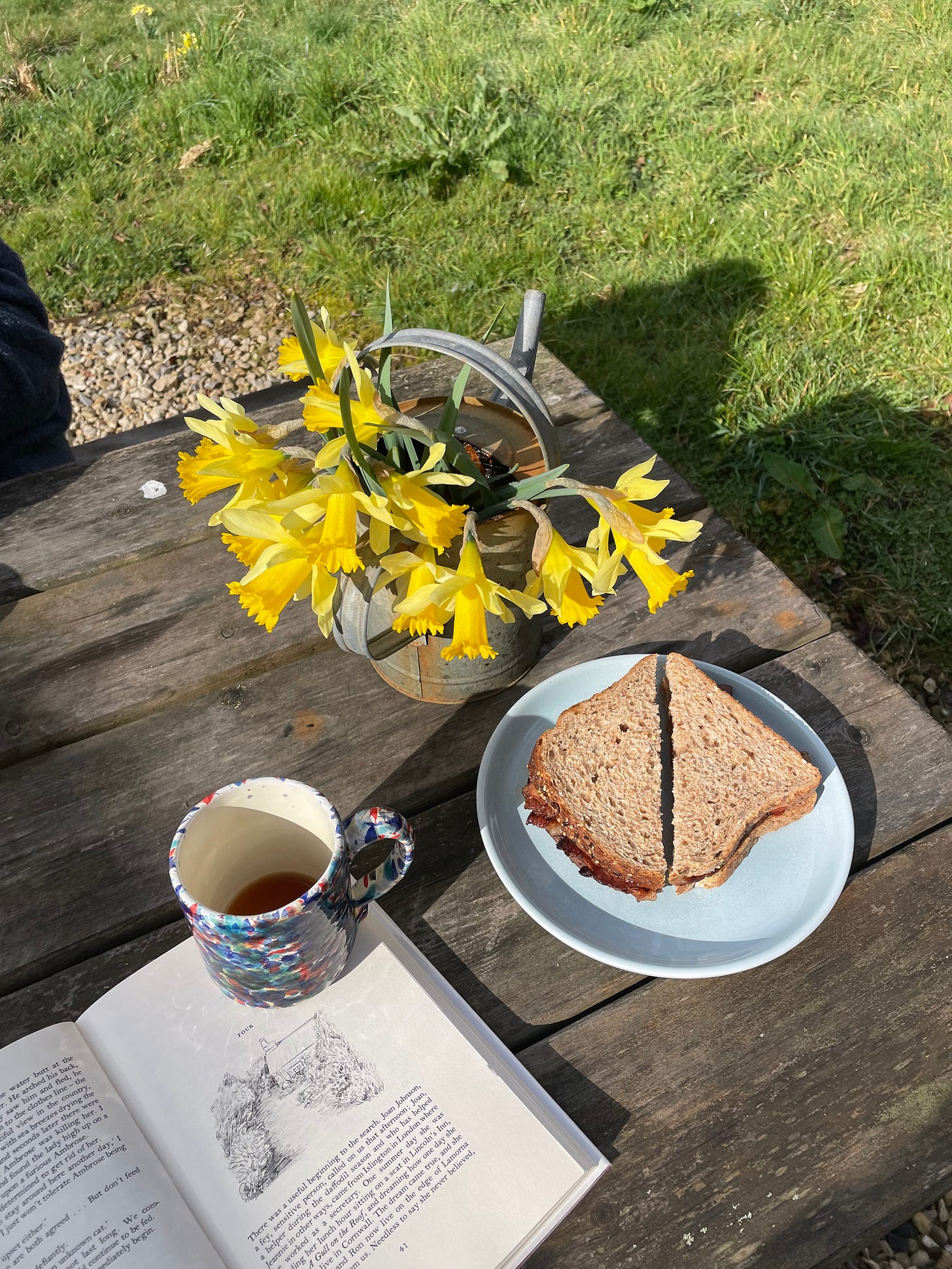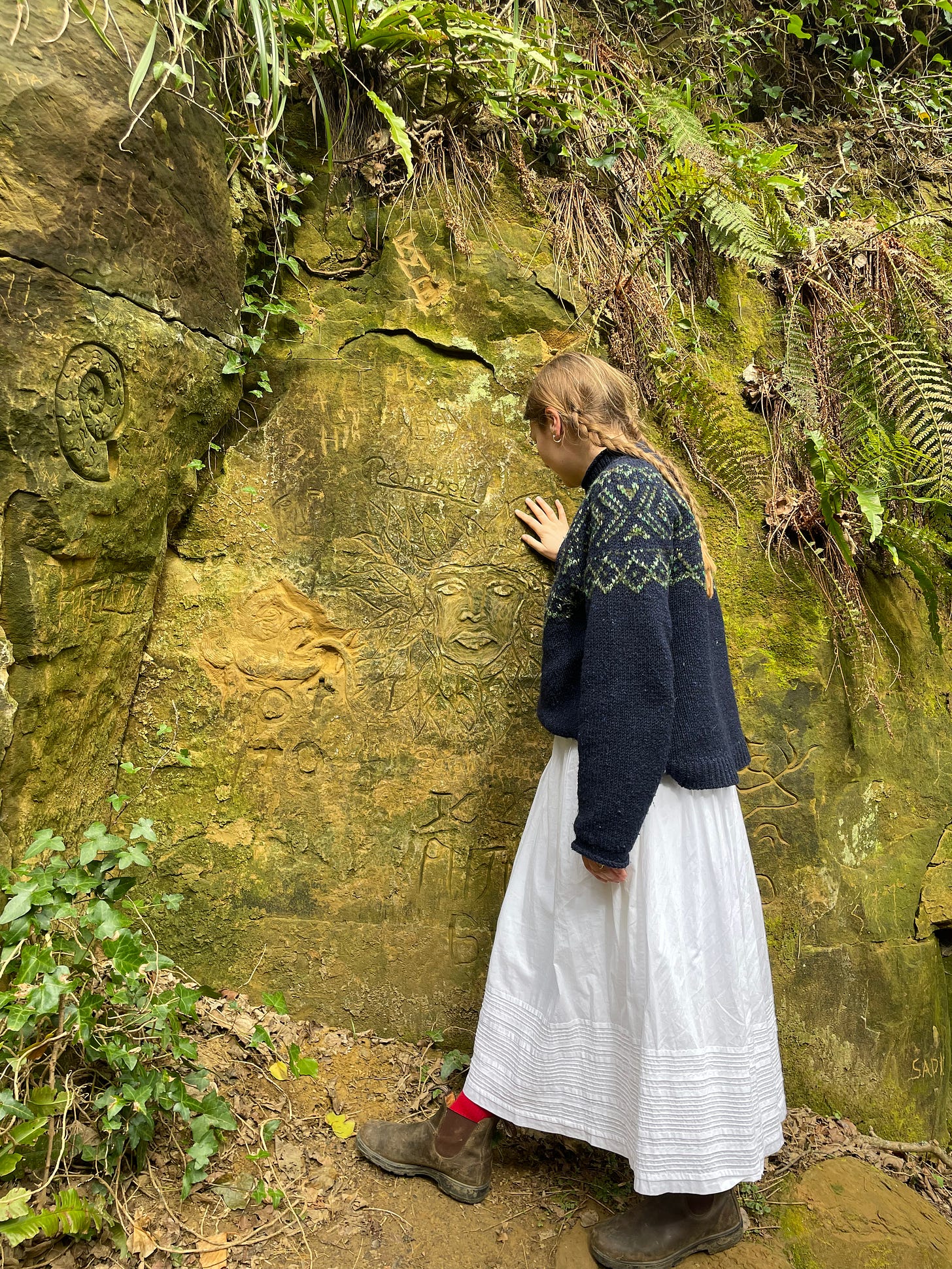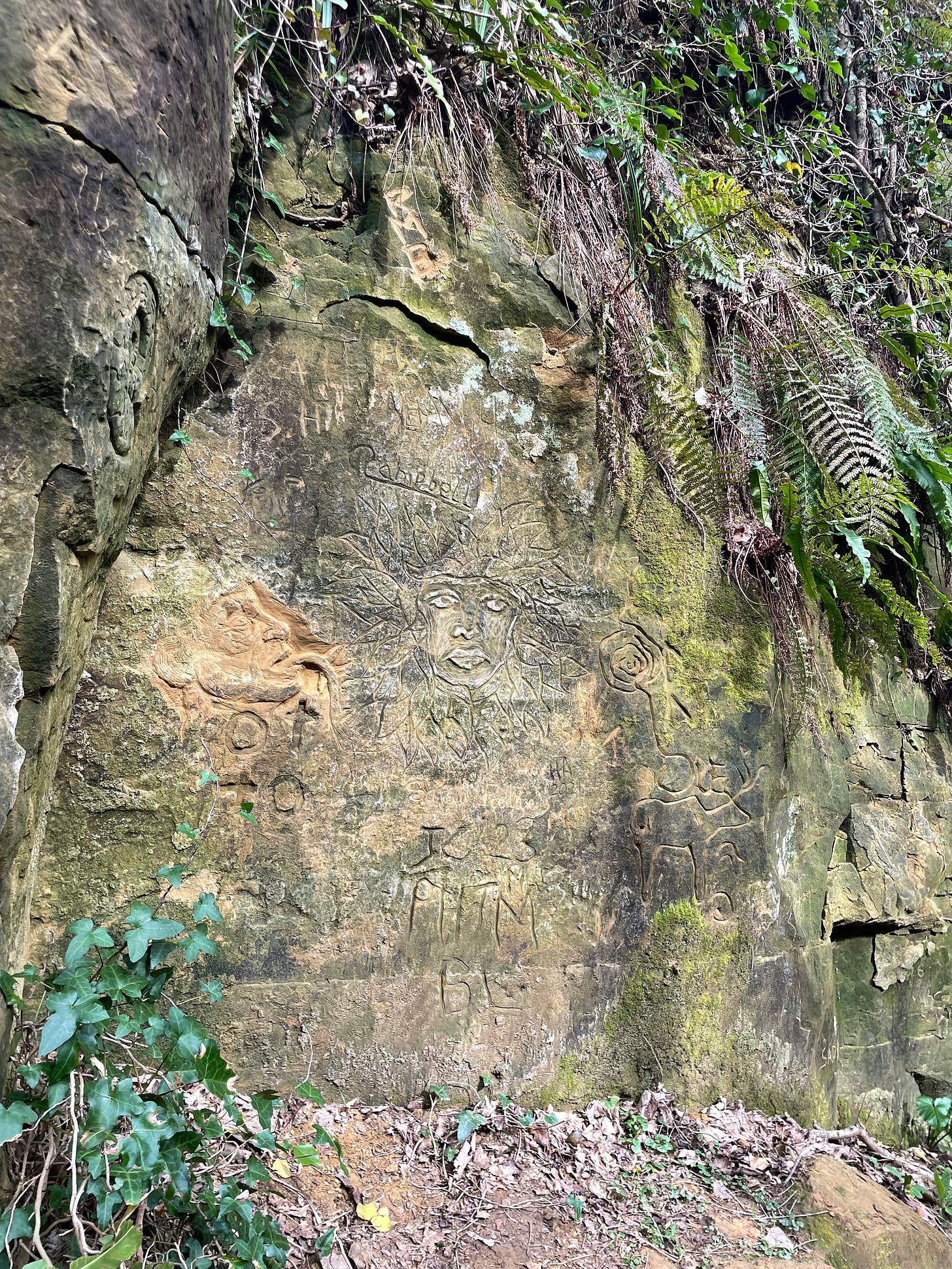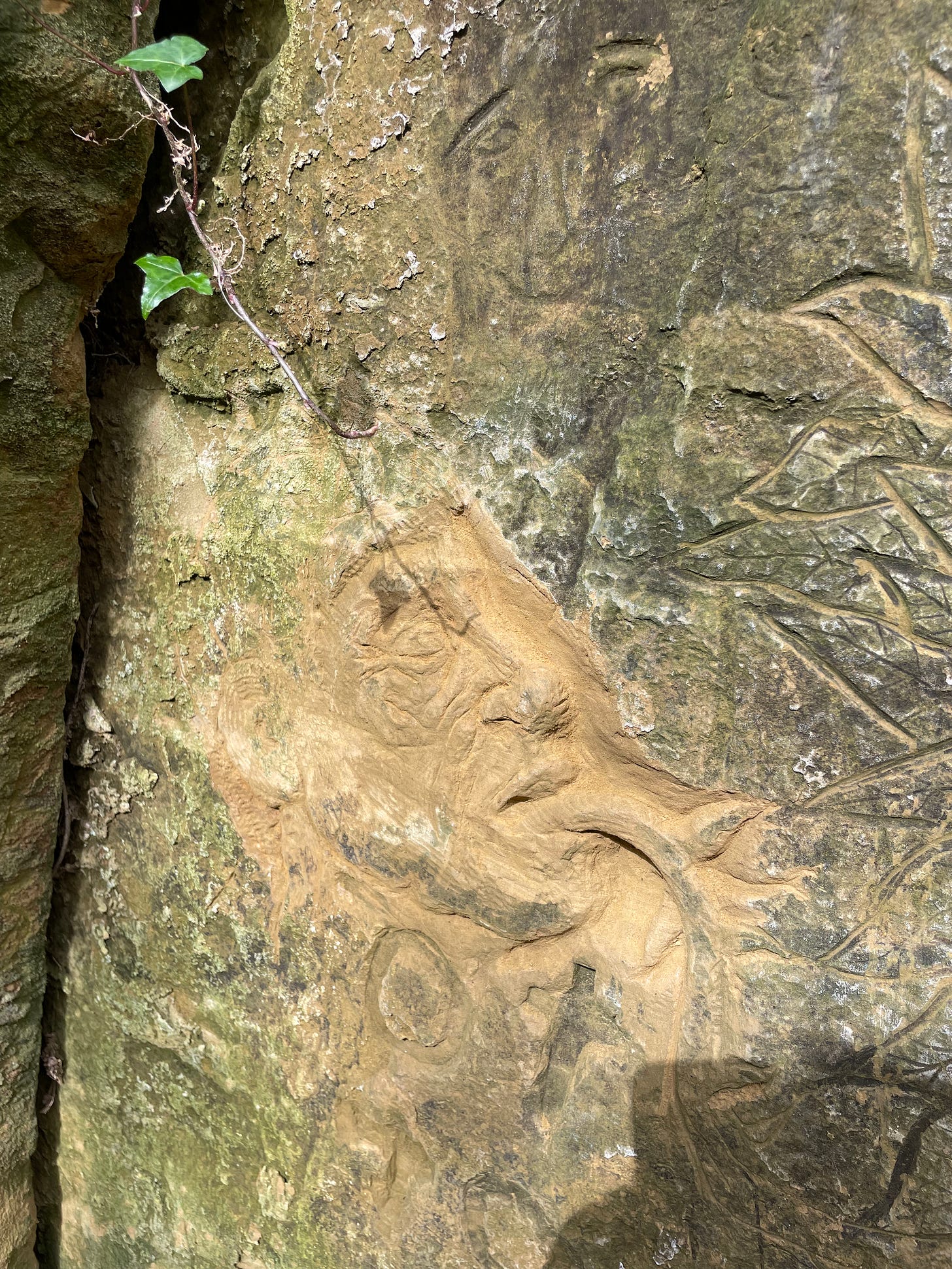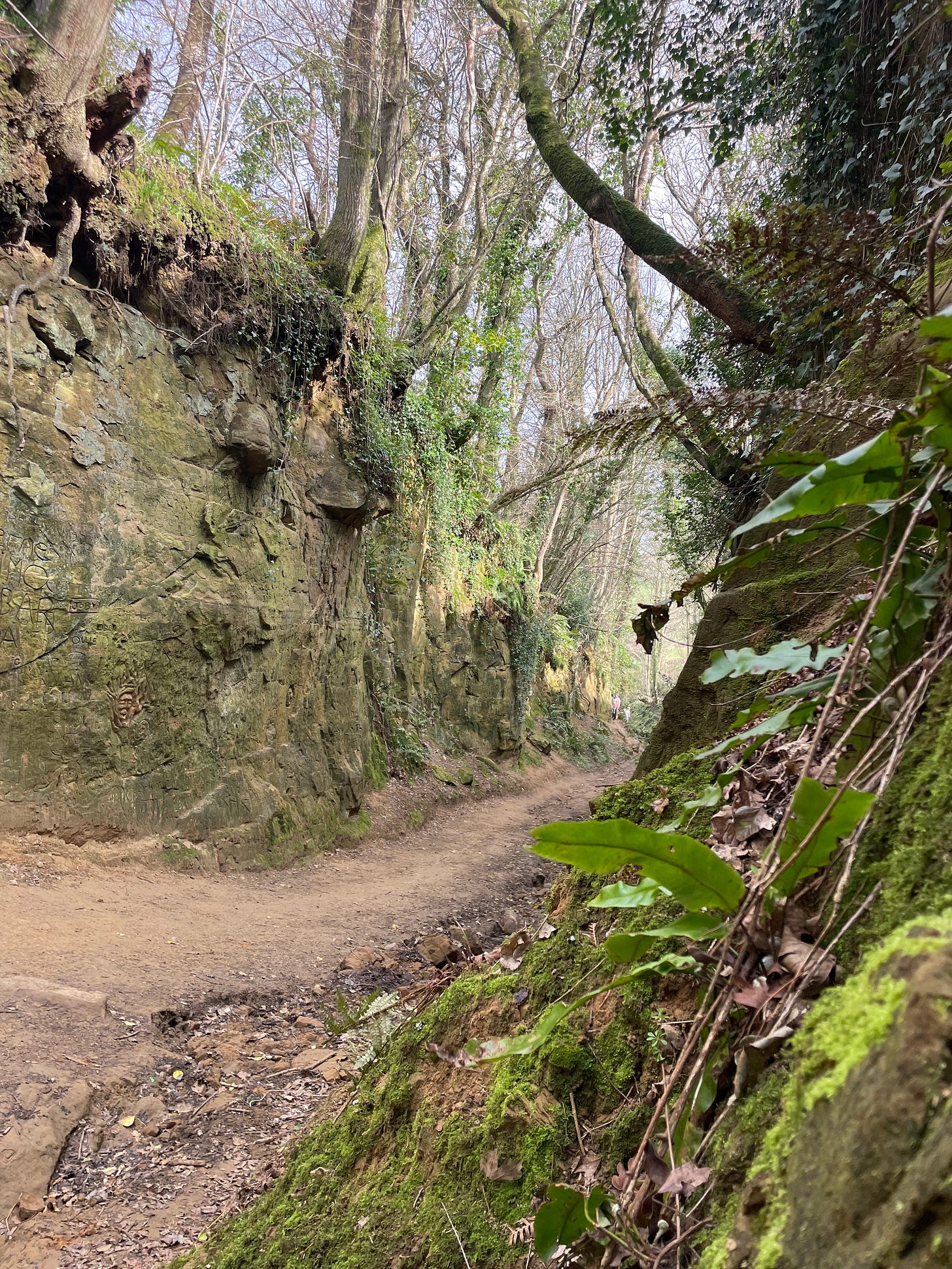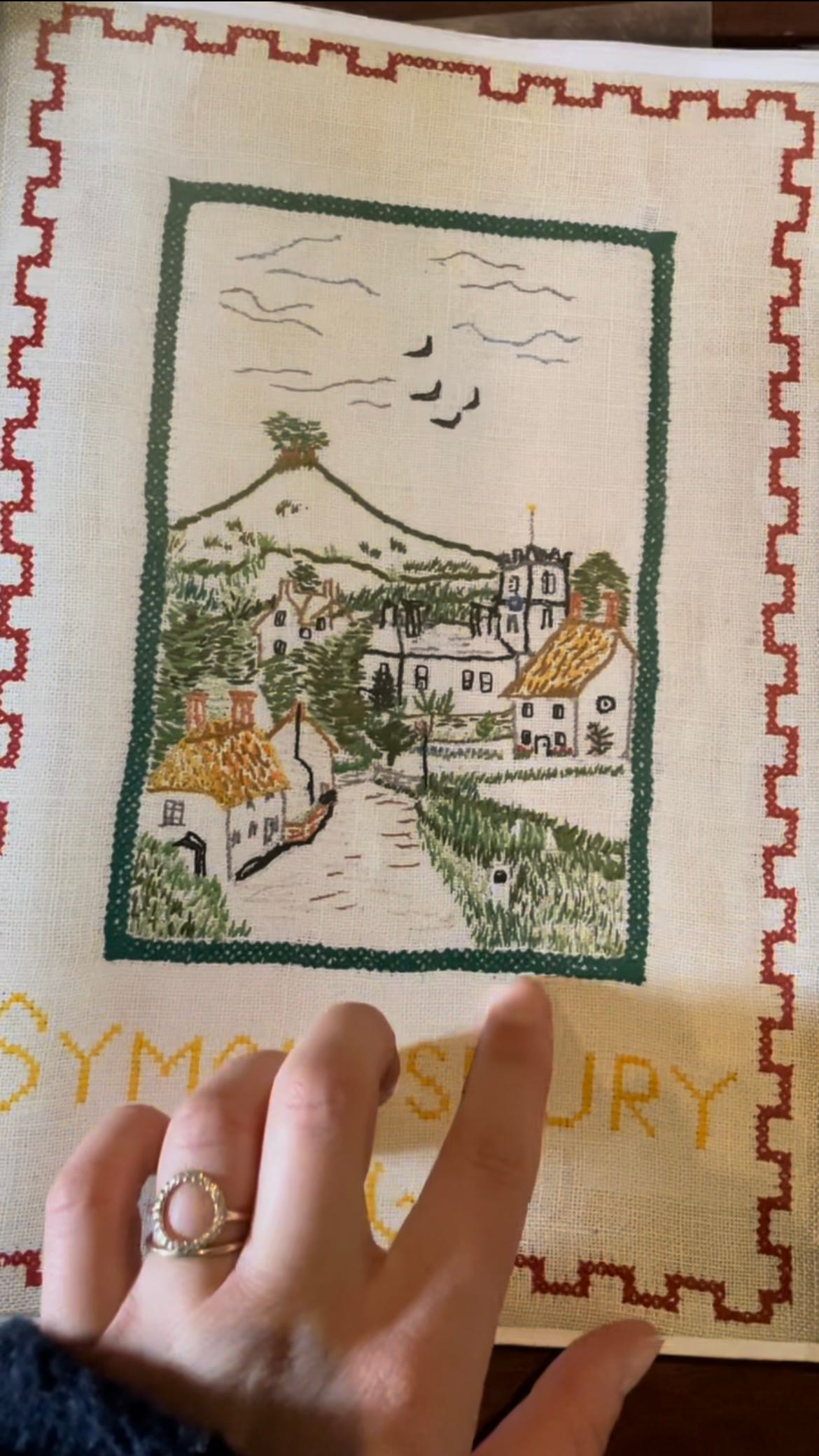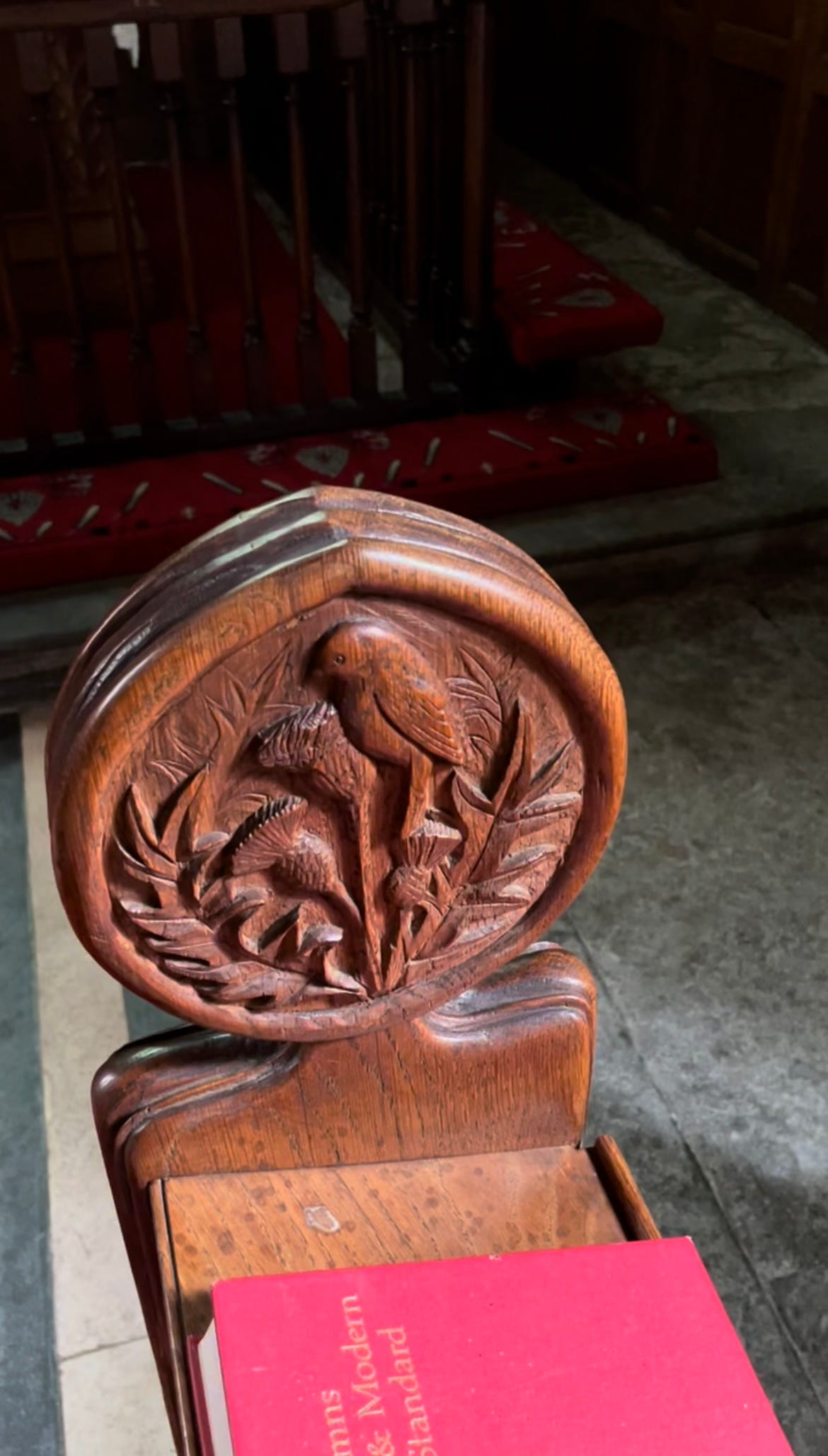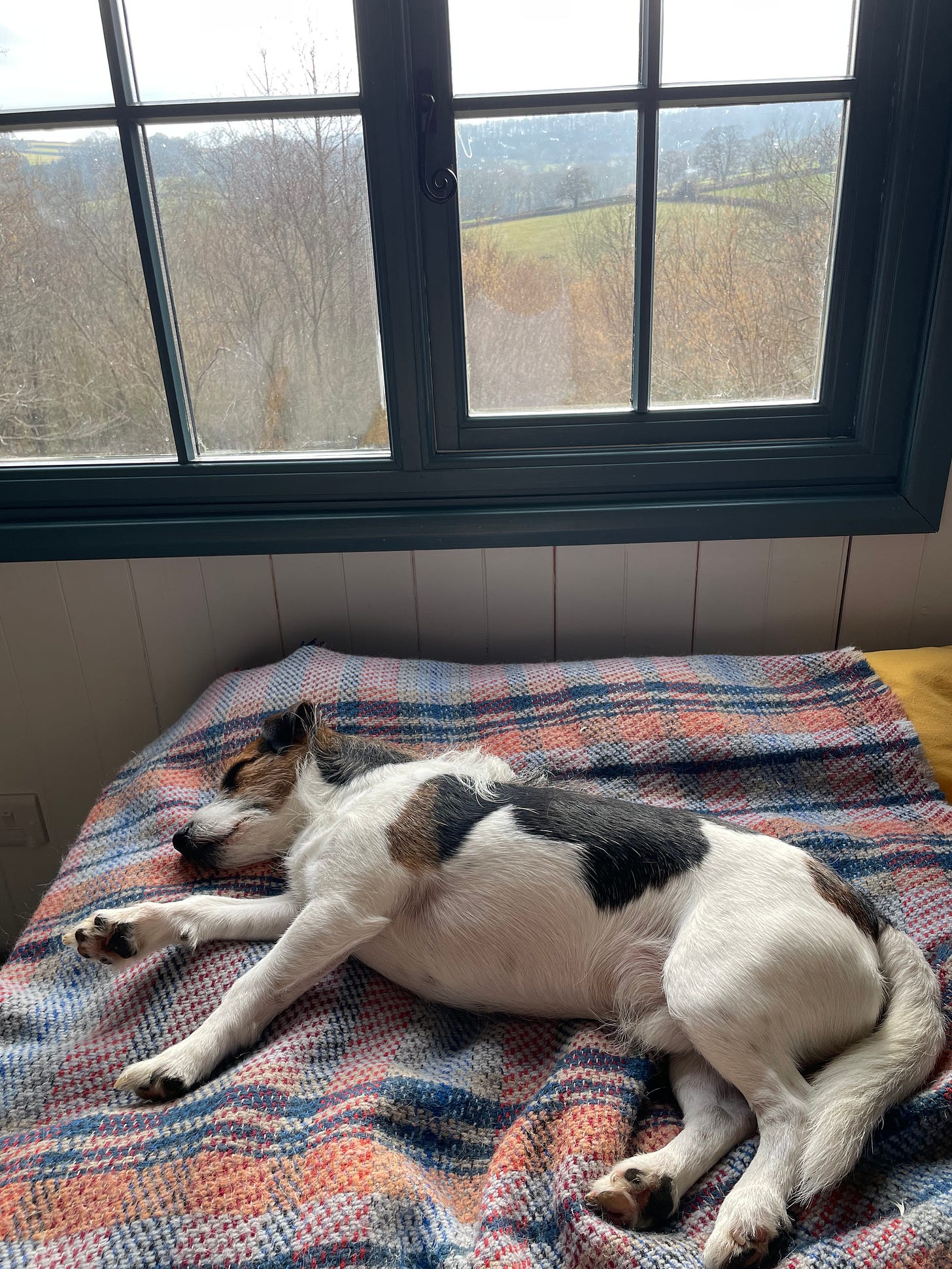Walking Ancient Holloways and Seeking out Wall Carvings in Dorset
A little piece on a recent trip to Dorset
Ben and I decided to take a short trip to our favourite part of Dorset. It is here that we stay in a tiny shepherds hut under an ancient cragged oak tree, tucked deep into a pocket of woodland close to Lyme Regis. In Spring we are greeted with woodland floors smiling with Primroses, Willow alive with the sight of their silvery buds and Hawthorn blossom filling the air with its sweet almond scent.
Ben wanted to take me on a walk he had planned for us. I didn’t know anything other than it was probably going to be something spiritual, standing stones perhaps? Or a coastal path which lead to fossil strewn beach.
As we walked along pathways lined with hearts-tongue Ferns and wild violets in chattering masses, the road began to sink, and it felt as though the trees were becoming taller. It was the first warm day that we have had of Spring, and I felt relief, as I had worn a silly white cotton dress, rather optimistically. So we walked on, beckoned by the Sun’s tickling beams stretching through the tree-root skyline, above us.
It soon became clear that we were walking a Holloway. The Anglo Saxons called these passage ways “Hola-weg”, meaning “sunken road”. These mysterious lost roads, secretly meander through much of Dorset’s countryside. You may have driven through some, which have been tarmacked and are now used as roads. But these very Holloways that we are walking are only reachable by foot, although whilst here we watched a man on a vesper, questionably try to navigate them.
Some have been paved with a flotsam and jetsam of fragmented brick and old pottery. But mostly the steep towering banks are made of sandstone. Centuries of feet and cattle walking these roads have only made them steeper and more pronounced. Some say pilgrims and even smugglers would use this route, as it leads directly to West bay. The air is heavy with their stories and tales.
I soon realise why Ben brought has me here. The carvings in the sandstone are beyond entrancing. The “Green Man” the spirit of the forest is the reason we are here, a moon, an ammonite, a Celtic pattern and a pair of embracing hands. It is unlike anything I have experienced before, the richness of the canopy above us and the flora and fauna, combined with the magic of the carvings, and the history of the people and folk using these pathways.
Ben and I cannot believe the peace that has surrounded us. The air is now much cooler, dank. This is to be expected, as the sandstone banks are 20ft high, with a further 30ft of trees. You feel as if you are shrinking as your feet continue on.
During the day these ancient lanes feel glorious. Bird song and Spring flowers envelope you. But at night I can imagine these shadowed lanes feeling dark and treacherous. Vulnerable to highway men, or a darker kind of magic. Local folklore speaks of Dorset’s fairy folk, the “Colpexies”, inscribing and carving into these banks, long before humans. They are said to have stony fingers which sometimes break off, these are also known as bellemites, the torpedo like fossils. If you find one, you are supposed to place these under your pillow and at night your greatest dreams will come true.
Since our visit here, I have read that there is a bioluminescent moss that grows here, called “Goblins Gold” that glows in the dark like carpets of emeralds.
I feel these mysterious pathways give us access to a deeper history and there is something that feels spiritual and comforting almost, knowing that our ancestors walked these paths over many centuries, before us, and which are now home to a rich biodiversity of plants and wildlife.
As we walk back along the Holloways towards the direction of the village, the banks begin to shallow, and it feels that we have left behind our shrunken fairy folk bodies, and returned back to our human scale again. I spot a welcome sight at the end of the lane.
The village pub. We are beckoned inside for our favourite tipple, Guinness. Kipper often likes to polish off the froth. We listen to the birdsong, in the cherry tree which leans over into the front pub garden, before heading off on our merry way. We make for the village church which is sat amongst a bank of dancing Daffodils. Ben and Kipper take this opportunity to bask in a the March sunshine on a small raised bench which overlooks the valley.
As I enter the church in my Guinness buzz, I am overwhelmed with the lightness. The welcome March sunshine is pouring through the windows. I stumble upon a small book. The front cover is a scanned image of a cross stitch of the village, seed stitched lines of blue make the sky and there is the recognisable hilltop with trees which you can see from most angles here.
It shows old black and white photographs of the village, sketches of nearby coastline, an example of the braided netting they used to grow the hemp for in these very fields. There is a page on dialect and local phrases. “Tiddy” for potato, “Tutty” for a nosegay, “Emmet” an Ant, “Dumbledore” meaning bumble bee, “Granfie Giggles” for Bluebells, “Shick Shack” for Oak leaves, there are so many I could go on. I find such local phrases so endearing, and revealing of the wonderful, salt of the Earth folk that you find in these rural pockets of the South West.
There is even a page marking out the dates which you will likely find the “wettest day”.
The Church itself dates back to the early 14th century. It’s striking barrel vault roof was built by shipwrights, from nearby West bay, in the 15th century. But concealed behind plaster for many years. The church was restored not once but twice, once in 1818 and once in 1920. The 1920 restoration was notable because much of it was undertaken by the parishioners themselves.
Earlier, in the 1880s the church acquired a stained glass window that was important in the Arts and Crafts movement. The stonework was designed by Edward Prior, who also built Holy Trinity at Bothenhampton and restored Burton Bradstock Parish church, as well as designing Pier terrace, the most prominent building at West Bay. The glass itself was the work of William Letharby who was a friend of William Morris, and who co-founded the Art Worker’s Guild.
I pottered around the church, searching out kneelers as I always do and looking at the stained glass windows which shone in a multitude of colours, like boiled sweets or forgotten jewels. I admired the wonky, hand-turned wooden candle holders, and the beautifully carved wooden pew ends. Some with Wrens sat atop of Thistles, others with Magpies, perched on oak branches. I ventured back outside as I heard Kipper barking, he saw me and stopped so I bent down to admire the Primroses which had made friends with many, many clumps of winding forget-me-nots. I pondered for a moment, I wonder what the locals would have given these as a nickname.
The Gargoyles above me seemed to smile, before I had a chance to fully explore the graveyard, I heard Kipper bark again. Signalling that he would rather like to continue onwards.
We walked back to the car, after stroking some gentle Donkeys which were reaching over the fence and deciphering if our pockets held anything they might want to eat.





